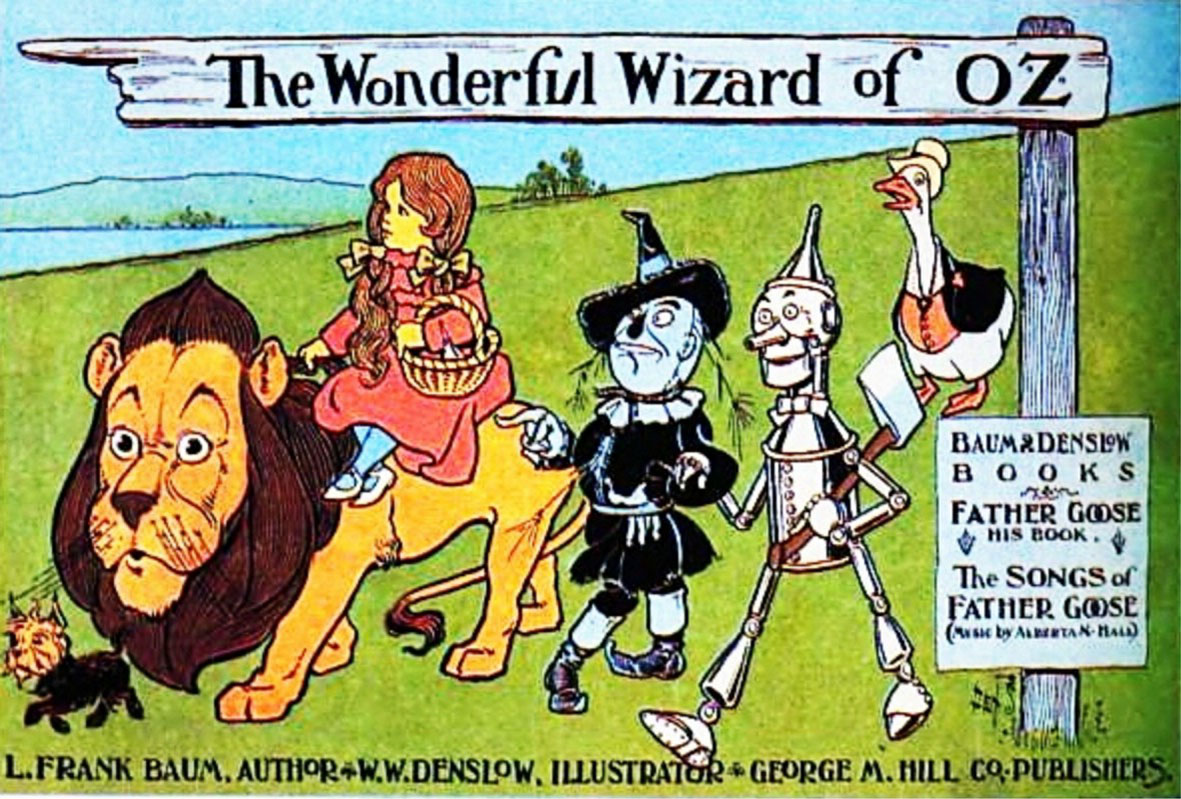Module 4: Politics in the Gilded Age, 1870-1900
Section outline
-
 Image from Chapter 20 in U.S. History (opens in new window) from OpenStax, licensed under Creative Commons Attribution License v4.0 with the image information: L. Frank Baum's story of a Kansas girl and the magical land of Oz has become a classic of both film and screen, but it may have originated in part as an allegory of late nineteenth-century politics and the rise of the Populist movement.In this module, you will explore politics in the post-Civil War United States. In the years following the Civil War, American politics were disjointed, corrupt, and, at the federal level, largely ineffective in terms of addressing the challenges that Americans faced. All told, from 1872 through 1892, Gilded Age politics were little more than political showmanship. The political issues of the day, including the spoils system versus civil service reform, high tariffs versus low, and business regulation, all influenced politicians more than the country at large. Factors such as overproduction and high tariffs left the country’s farmers in increasingly desperate straits, and the federal government’s inability to address their concerns left them disillusioned and worried. As the economy worsened, more Americans suffered; as the federal government continued to offer few solutions, the Populist movement began to grow.Upon completion of this module, you will be able to:
Image from Chapter 20 in U.S. History (opens in new window) from OpenStax, licensed under Creative Commons Attribution License v4.0 with the image information: L. Frank Baum's story of a Kansas girl and the magical land of Oz has become a classic of both film and screen, but it may have originated in part as an allegory of late nineteenth-century politics and the rise of the Populist movement.In this module, you will explore politics in the post-Civil War United States. In the years following the Civil War, American politics were disjointed, corrupt, and, at the federal level, largely ineffective in terms of addressing the challenges that Americans faced. All told, from 1872 through 1892, Gilded Age politics were little more than political showmanship. The political issues of the day, including the spoils system versus civil service reform, high tariffs versus low, and business regulation, all influenced politicians more than the country at large. Factors such as overproduction and high tariffs left the country’s farmers in increasingly desperate straits, and the federal government’s inability to address their concerns left them disillusioned and worried. As the economy worsened, more Americans suffered; as the federal government continued to offer few solutions, the Populist movement began to grow.Upon completion of this module, you will be able to:- Discuss the national political scene during the Gilded Age (CO 1-5)
- Analyze why many critics considered the Gilded Age a period of ineffective national leadership (CO 1-7)
- Explain the difference between the spoils system and civil service, and discuss the importance of this issue in the period from 1872 to 1896 (CO 1-7)
- Recognize the ways in which the issue of tariffs impacted different sectors of the economy in late nineteenth-century America (CO 1-5)
- Explain why Americans were split on the issue of a national gold standard versus free coinage of silver (CO 1-7)
- Explain why political patronage was a key issue for political parties in the late nineteenth century CO 1-5)
- Understand how the economic and political climate of the day promoted the formation of the farmers’ protest movement in the latter half of the nineteenth century (CO 1-5)
- Explain how the farmers’ revolt moved from protest to politics (CO 1-5)
- Explain how the Depression of 1893 helped the Populist Party to grow in popularity in the 1890s (CO 1-5)
- Understand the forces that contributed to the Populist Party’s decline following the 1896 presidential election (CO 1-5)
To achieve these objectives:
- Read the Module 4 Introduction above.
- Read and view the materials in Module 4 (click below)
- View the Module 4 PowerPoint below.
- Complete Module 4 quizzes/assignments/discussion boards based on chapter/document reading.
Module Pressbooks Resources and Activities
You will find the following resources and activities in this module at the Pressbooks website. Click on the links below to access or complete each item.
Background Colour
Font Face
Font Kerning
Font Size
Image Visibility
Letter Spacing
Line Height
Link Highlight
Text Colour
